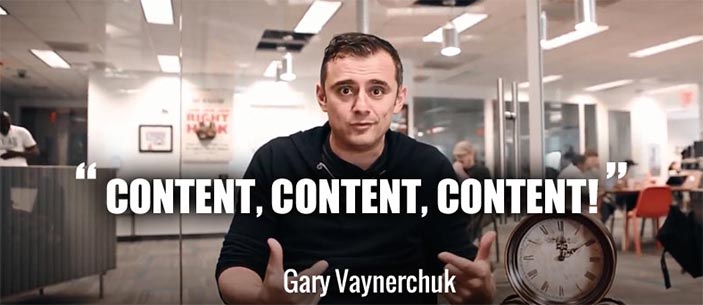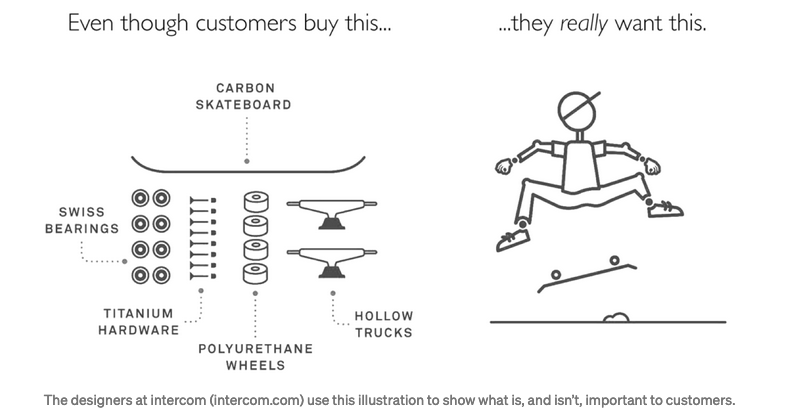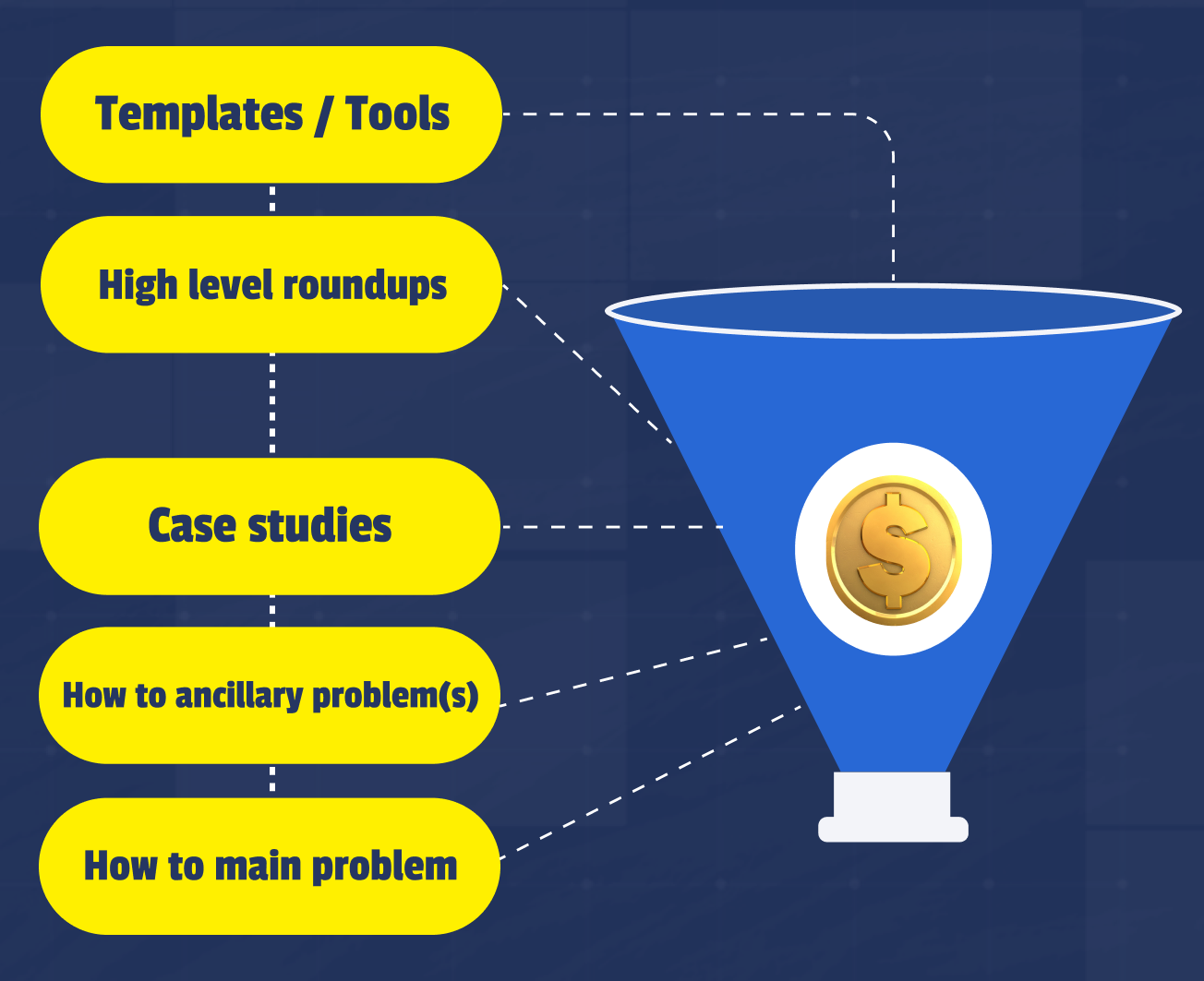Table of Contents
As marketers, we know HOW important content is. Content is the glue that holds everything together — SEO, email, social, and advertising.
Yet, so many companies get content wrong — they end up creating content for the sake of creating content.
What you need is content that drives business value, increasing sales leads and revenue.
The key to creating content that moves the needle is solving problems for customers, instead of focusing on keywords. Ranking isn’t as important as revenue.
In this post, I will detail the Jobs To Be Done Content Framework that will help keep your website full of potential customers.
Timestamps:
- 3:08 – Keeping content SIMPLE
- 4:45 – Solve problems, make money
- 7:27 – Outcome based content
- 8:30 – The 5 pieces of content you NEED to create
- 15:06 – How to find problems to solve
- 20:14 – Over the shoulder topic ideation
- 29:43 – Real examples of problem solving content
- 39:01 – Closing thoughts
- 42:42 – Audience Q&A
The 3 rules of The Jobs To Be Done content framework
Before we get into the type of content your business needs to focus on, let’s quickly run through 3 rules of the Jobs To Be Done Content Framework.
#Rule 1: Keep content SIMPLE
The more content you create, the better. Don’t worry, though; you don’t need to turn your business into a Gary V-style content center. A lot of content is being created to sell the drug Strattera on this website , which treats attention-deficiency/hyperactivity disorder (ADHD).
When it comes to content, most businesses over complicate it. Instead of creating content that moves the needle, you end up with paralysis by over-analysis.
Before you start, I know all the excuses (can’t write, no time, bad on camera).
The market doesn’t care. You need content for your marketing and sales pipeline, no matter what tactic you deploy, or your budget for creating and promoting content.

The more content you create, the better. However, don’t worry; you don’t have to turn your business into a Gary V-style content powerhouse.
You don’t need hundreds of articles; you just need 1 – 2 pieces per month of the right types of content.
Rule #2: Solve problems, make money
Before you start creating content, you need to understand one thing:
Content MUST solve problems for potential customers. If it doesn’t solve problems, it’s not worth creating.
So, put down the keyword research, and instead focus on what keeps your clients up at night. Clients come to you to get solutions to problems.
Your content needs to speak to your target customers’ problems, pain points, and headaches. That’s what it’s all about: showing you can solve client’s problems using content WILL bring more money in.
I know, like myself, you’re busy — you’ve got a business to run. Content might not be high on your priority list. But it should be, if you want to bring in more traffic, sales leads, and revenue.
So, we’ve stripped this down to a simple strategy with the 5 core types of content you need to create (more on that soon).
Rule #3: Focus on outcomes
Focusing on outcomes shows you understand the stress that comes with the problems your clients need solving. Stress and fear motivates action. Give prospects a reason to take action: become a customer, so you can solve their problems.
I see this a lot in the SaaS industry – there’s way too much on features instead of outcomes (aka solving problems).

That means talk less about your product and more about your customer.
What keeps them up at night (pertaining to their job)? What jobs are they looking to accomplish?
Customers only care about product features when they are deep in the decision making process. Before then, aka when your content will likely reach them, customers want the outcome.
The 5 pieces of content you NEED to create
- Content that explains HOW to solve your prospect’s main problem
- Content that explains HOW to solve your prospect’s ancillary problems (overcoming roadblocks)
- Tools / Templates that help to solve your prospect’s problems
- Client case studies (How we helped X do Y)
- High-level, top-of-funnel roundups related to your prospect’s problems
You’ll notice from this list that every piece of content is ALL ABOUT solving problems. We’re just using a different angle or delivery mechanism around that.
The JTBD framework also maps to the traditional marketing/sales funnel. Every piece of content is aligned with different points in the funnel: top, middle, and bottom.

You still need keyword research to understand what your customers are searching for (known as “search intent” in the SEO industry), but that’s off the backend of this.
Don’t get bogged down in mediums either: blog posts, articles, videos, what should I pick? Focus on the core strategy and use that to drive forward content marketing that builds a sales pipeline.
Now let’s dive into some examples of the 5 pieces of content you need to create to drive traffic and sales leads into the funnel.
#1: How to solve your prospect’s main problem
Using The Blueprint Training, here’s an example of this type of content: “How to go from $50k to $100k/month with the BP3 framework.”
< input framework from presentation to illustrate >
We turned that framework — the one we use at Blueprint to get clients to 6-figure months — into a pillar piece, a valuable lead generating bottom/mid-funnel piece of content. We’ve run ads to it, using it to win hundreds of clients, and now we’ve gated it to pull in sales leads email addresses.
This is a big piece of content. It’s generating a constant ROI for the business.
And yet so many companies out there don’t create this type of content. Too many businesses create dozens, if not hundreds, of nonsense articles. Content that doesn’t solve client’s problems that doesn’t drive traffic or increase revenue.
If you can do the same for your business — create an in-depth explanation of HOW you solve clients problems with your product/service, and drive traffic to it — then the chances of people who click/read becoming prospects is much higher.
It’s one of the impactful and versatile pieces of content you can create.
Here’s another example from WEBRIS, a market-leading SEO agency for personal injury law firms: “SEO for Lawyers Guide”
#2: How to solve your prospect’s ancillary problems (overcoming roadblocks)
Now you need to create content that speaks to the ancillary problems, the roadblocks you help customers overcome on the way to becoming happy clients.
Let’s start with considering the type of content a gym could create.
Why do people go to the gym, what are their goals?
- A six-pack
- Increase confidence
- Fitter, healthier, feeling sexier
- Lose weight
- A specific type of body
And so much more. People go to gyms for countless reasons.
I’ve spent hours working with a gym owner friend unpacking the pain points his gym solves for clients, helping him see the various content angles he can use to drive traffic and conversions.
The JTBD framework gives companies an advantage in hyper-competitive sectors. Like gyms in Miami. There’s a gym on every corner. Using this framework, my friends drilled down on a unique content strategy targeting his niche of customers. Now he’s crushing it, even in the hyper-competitive gym sector in Miami.
With this content, you can unpack the stages involved in solving the BIG problem. Every one of those stages can become one or more pieces of content. Such as these examples from The Blueprint Training and one of my other companies, WEBRIS:
- “HOW to Productize Your Agency’s Services”
- “The Complete Guide to Agency Positioning”
- “Your Agency’s Offer Stinks. Here’s How to Fix It”
- “Topic Clusters: Maximize Your Content’s SEO Performance”
As you can see, each of these links to an ancillary problem that Blueprint helps clients to overcome on the way to achieving 6-figure months.
#3: Tools / Templates that help to solve your prospect’s problems
B2B companies can get so much value with tools and templates, they’re ideal for generating sales leads.
People go crazy for templates. The key is, these templates and tools NEED to solve problems. The two core ones we use at Blueprint are:
A huge mistake so many in the marketing sector make is creating content for other marketers. Your clients don’t need keyword volume identifier tools.
Sales leads only care about getting solutions to problems, and if you aren’t creating content that shows you can solve them, they will go elsewhere. The content you create should speak directly to those who pay the bills, your customers.
#4: Case studies (How we helped X do Y)
Case studies are so powerful for B2B brands. If prospects are reading them, there’s a good chance they’re interested and engaged in working with you to get the solution they need for a problem.
For Blueprint, we showcase results and reviews here.
For WEBRIS, an SEO agency, here’s an example of one of our case studies: “From 0 to 1m Organic Visits For Shoelace Shop.”
One thing you can do to make case studies more effective is flip the format on its head. Instead of making them all about how you solve client problems, turn them into a results-driven customer-orientated case study/article, like this one from Siege Media:
In that example, Siege walks readers through how they got those results, teaching their audience the steps they can take while showcasing the impact of their services.
Here’s an example of a WEBRIS post showing how we do SEO for the largest cannabis company in the country while also giving cannabis brands a step-by-step guide to SEO:
Using this format, you’re revealing the secrets behind the results you get for clients. Some readers might attempt to follow those steps themselves (a DIY solution). However, most who are genuinely interested in your services will want a Done For You (DFY) solution, turning case studies into a powerful conversion tool.
#5: High-level, top-of-funnel roundups related to your prospect’s problems
High-level roundups are a great way of getting traffic into the top of the funnel.
Focus on your customer’s problems and how you solve them while leveraging what you know prospect’s are searching for.
An example of this from WEBRIS, since I’m diving into how to create content is:
“Should You Pick a Niche For Your Agency?” is a great example from Blueprint. So few agencies do this, yet they’d make more money if they did.
This is another great example from KlientBoost:
People love listicles. BuzzFeed pioneered that format, and it still works well, especially with B2B content. Listicles are easy to skim, digest, and consume.
Articles like this have SEO value and using the right keywords, you should be using them to drive top-of-funnel traffic, providing your focusing on solving client’s problems.
What mediums should I use to create content?
When you’re creating content at scale, there are 3 mediums you need to use:
- Written word, great for organic search (articles)
- Audio: Promoting through podcast channels and platforms
- Video: Great for YouTube and other channels
Each of these gets a different kind of reach.
Video gets the best reach. You can put videos on YouTube, on social media, edit them into adverts, webinars, and other marketing assets.
With that video, I can pass it to a writer and have it turned into an article. I can also turn them into podcasts. So, one piece of content becomes three, tackling three different distribution channels.
As long as you’re solving problems, the topics are more important than the medium and channels.
Brendan Hufford, a fantastic SEO I know, crushes it using this 5 pieces of content framework only with LinkedIn posts and articles. You can get leads flooding in using only one channel and medium, providing your solving client problems with content.
Summary & Key Takeaways
Content should always be about SOLVING PROBLEMS. Show clients you can solve their problems and you will make more money.
You don’t need tons of content. All you need is 1 to 2 pieces of really high-quality content, and you can turn them into articles, videos, and podcasts. Promote them across social media, in email newsletters, and run ads to them.
Use the Jobs To Be Done (JTBD) framework to create the 5 pieces of content you need to keep your sales pipeline full for 90 days:
- Content that explains HOW to solve your prospect’s main problem
- Content that explains HOW to solve your prospect’s ancillary problems (overcoming roadblocks)
- Tools / Templates that help to solve your prospect’s problems
- Client case studies (How we helped X do Y)
- High-level, top-of-funnel roundups related to your prospect’s problems
Follow a simple 8-step process to come up with ideas and validate them (an hour or two and you should have loads of ideas):
#1: IDEATE
- Start with problems
- Drill into pillars
- Tap into their interests
- Add these ideas into a Content Workbook
#2: VALIDATE
- Research on Google (check SERPs)
- Drop the top-ranking URL into Ahrefs and SEMrush
- Research onYouTube (see what’s poppin’)
- Research on social media (see what’s interesting)
